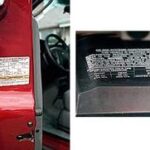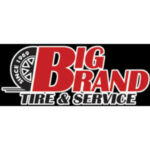Run flat tires are designed so that your vehicle is still drive-able, and able to get you where you need to go – such as to the nearest gas station, in the unfortunate event that you suffer a flat tire while on the road. Run flat tires are currently available as an option on many cars and trucks.
There are three types of run flat tires, self-supporting – with stiff sidewalls to support the weight of the car, self-sealing – which contains an extra lining within the tire to seal off small punctures, and auxiliary-supported – which contains an additional support ring inside the tire.
Are They Worth It?
At first glance, these tires seem like a dream come true but there are several things that you need to consider before purchasing them for your own car.
Cost
Run flat tires are much more expensive than regular air filled tires with most of them running over $300.00 per tire. When you add the cost of the installation to the price of the tires you are looking at a very expensive new pair of car shoes.
Availability
Because run flat tires are so expensive, and they are not yet widely used, most side of the road service stations, and tire centers, do not keep them in stock, which means if you need one you must either get your car to the nearest dealer who sells them or be prepared to wait for one to be ordered and delivered. Depending on where you live, or more likely where you get the flat, this can take hours or even days.
Dependability
Don’t kid yourself; run flat tires do get flats just as easily as regular tires. The difference being that you can still drive on a run flat tire, at reduced speeds and for a limited amount of mileage. Depending on which type of run flat tire you own that distance can be anywhere from 50 to 200 miles.
Pro
If you are driving locally, this can be a lifesaver. Mother’s with young children, people who are on their way to or from a formal occasion – when getting down and dirty wouldn’t be appropriate, or anyone who might get a flat during harsh weather would be comforted to know that they won’t have to immediately stop their car, get out and change a flat tire in the middle of the night or when traveling on a treacherous road .
Con
This may not be the case if you happen to be traveling long distance.
Let’s say for example you are traveling from New York to North Carolina. It’s 10:00 pm and you are on the New Jersey Turnpike when all of a sudden you hear loud chiming, a red light flashes on your dashboard and your navigation system tells you to carefully pull over. You have a flat tire. You smile because you know that you have purchased a set of run flat tires and then you proceed to the nearest gas station to stop and have a look.
When you get there, you notice that the flat is on the sidewall of your tire. (Yes, this sounds unreal but believe me, it can happen.) The service station attendant informs you that the service center is now closing and anyway run flat tires can not be repaired on their sidewalls. You thank him for his time and proceed on your way. After a few more miles, your car begins pulling in odd directions and you need to decrease your speed. (Keep in mind you are on the Jersey Turnpike where no one else wants you to decrease your speed.)
You pull off at the next service station and find that one closed also. You do this three more times until you finally believe that there is no place to get a tire replaced or repaired at this time of night. At this point you are somewhere in Delaware and begin looking for a motel that has a gas station nearby. Since you are traveling on Interstate 95 now, you get lucky right away.
The next morning, you go to the gas station and are told they don’t keep run flat tires and are sent to the nearest tire center, which opens in about an hour.
You wait patiently for the tire center to open only to be told that they will have to order a run flat tire since yours is the first car they’ve ever seen one on and they don’t keep them in stock.
Instead of waiting the two hours it will take to have your new run flat tire delivered you decide to have a regular tire installed which means that you will have to purchase the correct tire when you finally reach your destination incurring a double expense but at this point you just want to go home.
As you leave the tire center, you notice that the annoying red flashy light and flat tire warnings are still present on your dashboard and will continue to be there until shut off at the dealer.
Evaluation
Okay, I’ll admit it. This wasn’t just an example. It really happened to me. My decision when I got home? I kept the run flat tires on my car. I think they are great locally but I also kept the regular tire that I purchased for a spare, to be carried in my trunk, and used whenever traveling long distance in the future. The problem is that my car didn’t come with a place to keep a spare tire and so I lose precious trunk space in order to have peace of mind.
My suggestion to you if you are considering whether or not to purchase run flat tires for your own car is to be sure your car comes with a tire compartment and a spare. That way you’ll have the luxury of run flat tires when driving locally without the inconvenience of run flat tires when traveling long distance.





